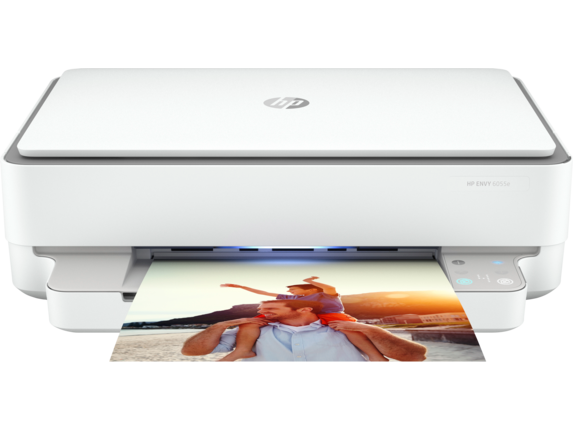Polycarbonate and ABS Injection Molding: An Overview
Injection molding is a common manufacturing process used to produce plastic parts and products at high volumes. Two of the most widely used injection molding plastics are polycarbonate (PC) and acrylonitrile butadiene styrene (ABS). These versatile thermoplastics offer an exceptional balance of mechanical, thermal, and electrical properties that make them ideal for a vast range of applications.
In this guide, we will provide a detailed overview of polycarbonate and ABS injection molding. We will examine the unique material attributes of each plastic, typical applications, the manufacturing process, design considerations, and compare the advantages and limitations of each material. With this knowledge, design engineers and product manufacturers can select the best material for their specific application requirements.
What is Polycarbonate Injection Molding?
Polycarbonate (PC) is an amorphous thermoplastic known for its unique combination of toughness, temperature resistance, optical clarity and high flow properties. It offers superior impact strength and ductility over many other clear plastic materials like acrylic or polystyrene.
Polycarbonate is widely used for injection molded applications that demand strength, transparency, dimensional stability, electrical insulation and heat resistance up to 140°C. Common products made via polycarbonate injection molding include automotive headlamps and tail lights, electronic housings, medical devices, safety goggles and shields, lenses and more. If you want to learn more about molding with polycarbonate, visit this informative page.
Key Properties and Benefits of Polycarbonate Plastic
- High impact strength and ductility
- Excellent transparency and optical clarity
- Heat deflection temperature of 130-140°C
- Good dimensional stability
- Electrical insulation properties
- Inherently flame retardant with UL94 V-2 rating
- Can be post-formed into complex shapes
Polycarbonate offers a unique balance of optical clarity similar to glass while providing the durability of industrial plastic. It is up to 250 times stronger than traditional glass and highly resistant to breakage and deformation. The high impact strength makes it suitable for application exposed to moderate force or external impacts.
The amorphous structure and molecular cohesion provide good resistance to creep deformation making it dimensionally stable across a wide temperature range. Polycarbonate retains its properties and performance from below freezing up to 120°C for long term use.
The unique properties profile enables it to be used as a lightweight, shatter-resistant alternative to glass for transparent structures like machine guards, riot shields, lenses, automotive components and more. Polycarbonate provides glass-like transparency but is lighter weight and safer for impact prone applications.
Polycarbonate Injection Molding Process
Polycarbonate injection molding involves heating polycarbonate plastic pellets to a molten state and injecting the material at high pressure into a steel mold tool. The mold is cooled, causing the plastic to solidify in the cavity and take the desired shape. Once solidified, the mold opens and the finished polycarbonate part is ejected.
Here are the key steps in polycarbonate injection molding:
- Polycarbonate plastic pellets are gravity fed from a hopper into the injection barrel
- A reciprocating screw feeds the pellets forward and shears them into a molten state
- Once sufficiently melted, the screw injects the polycarbonate into the mold tool under high pressure, usually 15,000 psi or more
- The two mold halves are kept cool, causing the injected plastic to rapidly solidify
- Once solidified, the mold opens and robotic arms with ejector pins remove the finished PC part
- The part is then trimmed of any flash and tested for quality control
Injection temperatures for polycarbonate typically range from 280°C to 320°C to facilitate filling thin wall sections and complex geometries. The injection pressure capability ensures the material completely fills every contour of the mold tool.
The cycle times for polycarbonate injection molding may range from 60 to 120 seconds depending on part thickness and complexity. The process enables high volume production of polycarbonate components to tight tolerances.
Polycarbonate Mold Design Considerations
Proper mold tool design is critical for successfully injection molding high quality polycarbonate parts:
- Generous radii and draft angles (>2°) ease demolding
- Low mold surface temperatures (<80°C) prevent melting/sticking
- Vent ports allow trapped gases to escape the mold
- Minimal weld/flow lines using gate placement strategy
- Uniform wall thickness for even filling and cooling
- Hot runner systems for fast cycles with minimal runners
Polycarbonate requires attention to uniform cooling and wall thickness variations to prevent defects like internal stresses, cracking or warpage. The low-pressure process avoids molecular degradation that can occur with other plastics.
Device housings, enclosures and transparent covers are common applications of polycarbonate injection molding. The lightweight, durable plastic provides an excellent balance of properties for these uses.
What is ABS Injection Molding?
Acrylonitrile butadiene styrene (ABS) is an engineering thermoplastic valued for its strength, stiffness, durability, and economy. It is one of the most widely used plastics for injection molding applications across many industries.
ABS offers excellent low-temperature impact resistance and mechanical strength combined with chemical and stress cracking resistance. It also has good dimensional stability and electrical insulating properties. This versatility makes ABS a popular choice for automotive, consumer appliance, electronics, medical devices and construction applications. For insights into the world of ABS molding, check out this resource.
Key Properties and Benefits of ABS Plastic
- High impact strength, even at low temperatures
- Good stiffness and tensile strength
- Excellent chemical and stress crack resistance
- Dimensional stability across a wide temperature range
- Good electrical insulating properties
- Flame retardant grades available (UL94 HB)
- Capable of chrome plating for decorative finishes
- Economical for high volume molded parts
The key benefits of ABS plastic include its strength-to-weight ratio, hardness, and impact resistance. ABS combines the strength and rigidity of acrylonitrile and styrene polymers with the toughness and durability of polybutadiene rubber.
This gives it exceptional dimensional stability and ability to withstand physical impacts and mechanical stress better than many other thermoplastics. Parts maintain integrity over a wide temperature range from -20°C to 80°C for long service life in demanding environments.
The versatile properties profile and ease of machining/finishing make ABS a workhorse plastic for mass production across diverse markets.
ABS Injection Molding Process
ABS injection molding involves melting ABS plastic granules and injecting the polymer into high pressure metal molds. Key steps include:
- ABS granules are gravity fed into the injection molding barrel
- Granules are heated to a molten state around 220-260°C
- The molten ABS fills the mold tool under high pressure up to 20,000 psi
- The mold halves remain cooled so the plastic solidifies
- Once solidified the mold opens and the ABS part is ejected
- Parts undergo trimming/finishing before quality inspection
ABS flows readily into thin sections to fill intricate mold details. Hot runner molds optimize the process by eliminating sprue scrap waste.
Cycle times for ABS injection molding range from 25-100 seconds depending on part size and complexity. High production rates are possible to meet demand economically.
Key Design Considerations for ABS Molds:
- Draft angles > 1° for easy ejection
- Generous internal radii to avoid cracking
- Uniform wall thickness for even filling
- Proper venting for trapped gases
- Minimal weld/flow lines
- Hot runner systems to eliminate sprues
- Textured surfaces can hide flow marks
Proper mold cooling is critical with ABS to prevent defects and warpage. Cycle times and mold temperatures must suit ABS material properties.
ABS injection molding produces durable components for appliances, automotive dashboards and trim, electronic device housings, medical equipment enclosures, pipe fittings and more.
Comparison of Polycarbonate vs. ABS Properties
While both are widely used thermoplastics, polycarbonate and ABS do have significant differences in their properties and performance that suit them for different applications.
Property Polycarbonate (PC) ABS Strength Strong, ductile Good strength Impact Resistance Excellent, 250X glass Excellent, low temperature Temperature Range -40°C to 135°C -20°C to 80°C UV/Weathering Resistance Fair, can yellow Poor, degrades in sunlight Chemical Resistance Fair-good Excellent Flame Retardance Inherent With FR additives Optical Clarity Excellent Opaque Dimensional Stability Excellent Good Electrical Properties Excellent insulator Good insulator
Polycarbonate offers superior strength, heat resistance and optical clarity but has only moderate UV and chemical resistance. ABS provides better rigidity, chemical/weathering resistance but cannot match the clarity or high heat deflection temp of polycarbonate.
Weighing design needs like operating environment, strength requirements, clarity and production volumes will help determine which material is optimal for an application. Consulting with a qualified plastics injection molder is advised to select the right solution.
In summary, polycarbonate and ABS both offer exceptional performance but suit different applications:
- Polycarbonate – transparent structures, headlamps, riot shields, medical devices
- ABS – appliance housings, automotive, electronics, construction
With their balanced property profiles, polycarbonate and ABS injection molding resins will continue seeing high demand across many industries.
Advantages of Injection Molding With Polycarbonate and ABS
Polycarbonate and ABS are both well suited for the injection molding process which offers several advantages:
- High production output with short cycle times
- Precise repeatability for complex, tight tolerance parts
- Consistent quality and mechanical performance
- Added features can be molded-in
- Wide range of aesthetics and decorative effects
- Streamlined automated manufacturing
- Leverage economy of scale
- Just-in-time production
Injection molding enables millions of identical polycarbonate or ABS components to be produced annually to exact specifications. This repeatability and efficiency makes it ideal for high volume plastic manufacturing.
Some other benefits over alternative processes like CNC machining or thermoforming include:
- Lower costs for high production runs
- Tighter dimensional tolerances
- Reduction in secondary finishing/machining
- Ability to mold complex or irregular shapes
- Consistent material quality throughout parts
- Minimal material waste from sprues/runners
By injection molding with polycarbonate or ABS, product designers and engineers can achieve the right balance of properties, performance, and manufacturability for their unique needs. The wide use of these exceptional thermoplastics will continue driving innovations across many industries.







